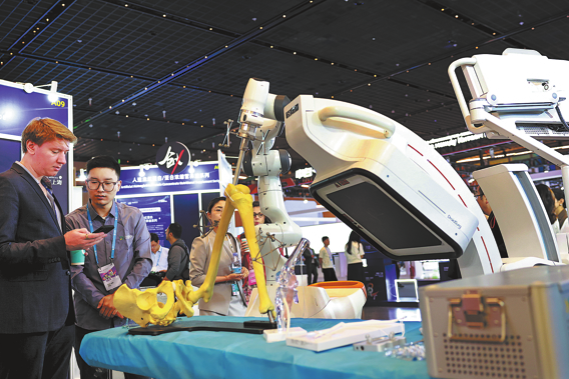NASA spacecraft snags rock sample on asteroid

WASHINGTON-A NASA spacecraft touched down on the rugged surface of the Bennu asteroid on Tuesday, grabbing a sample of rocks dating back to the birth of our solar system to bring home.
The minivan-sized OSIRIS-REx spacecraft (Origins, Spectral Interpretation, Resource Identification, Security-Regolith Explorer), built by Lockheed Martin, extended its 3.4-meter robotic arm toward a flat patch of gravel near Bennu's north pole and plucked the sample of rocks, the space agency's first handful of pristine asteroid rocks.
"Sample collection is complete, and the back-away burn has executed," Lockheed mission operator Estelle Church added seconds later, confirming the spacecraft eased away from the space rock after making contact.
The probe was expected to send back images of the sample collection on Wednesday and throughout the week so scientists can examine how much material was retrieved and determine whether the probe will need to make another collection attempt.
If a successful collection is confirmed, the spacecraft will journey back toward Earth, arriving in 2023. Japan is the only other country to have already accomplished this.
Bennu, located hundreds of million of kilometers from Earth, is a boulder-studded asteroid shaped like a spinning top and as tall as the Empire State Building in New York City.
"Everything went just exactly perfect," Dante Lauretta, OSIRIS-REx principal investigator from the University of Arizona in Tucson, said on a NASA live feed from Lockheed's mission support building. "We have overcome the amazing challenges that this asteroid has thrown at us, and the spacecraft appears to have operated flawlessly."
The spacecraft launched in 2016 from Kennedy Space Center for the journey to Bennu. It had been in orbit around the asteroid for nearly two years preparing for the "touch and go" maneuver.
Asteroids are among the leftover debris from the solar system's formation some 4.5 billion years ago.
Scientists believe asteroids and comets crashing into early Earth may have delivered organic compounds and water that seeded the planet for life. Atomic-level analysis of samples from Bennu could provide key evidence to support that hypothesis.
Agencies - Xinhua

Today's Top News
- US arms sales to Taiwan a dangerous gambit: Editorial flash
- Taiwan opposition lawmakers announce plan to impeach Lai Ching-te
- Boosting consumption will be key in 2026
- No one should remain silent accomplice of racism
- Hainan FTP opens fast lane
- Visa-free measures spur surge in visitors






























